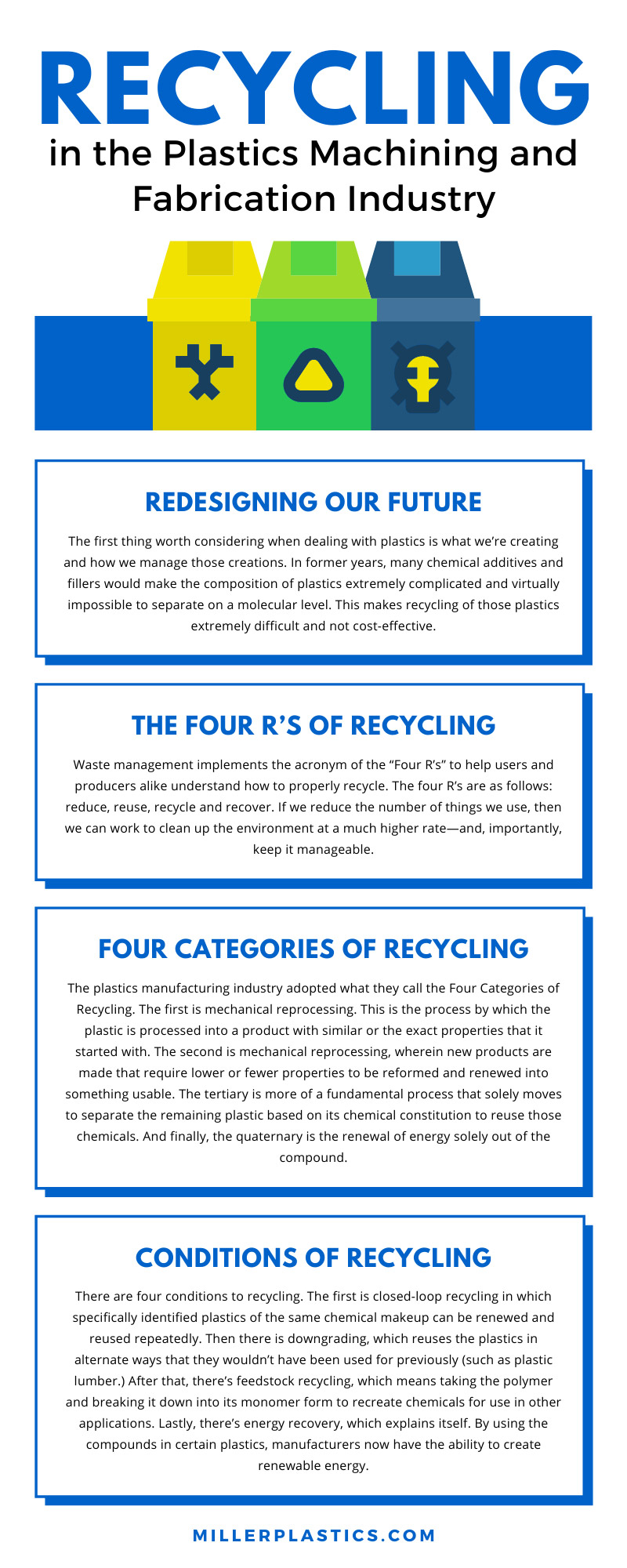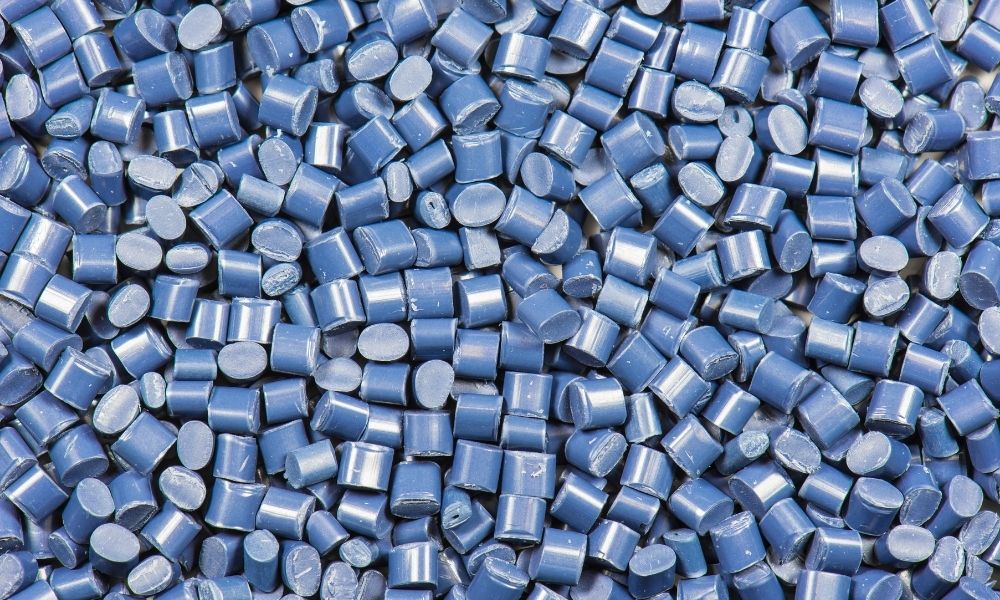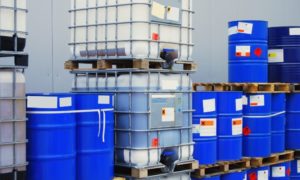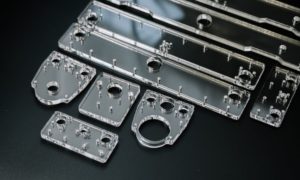The plastics industry has come a long way since its inception sixty years ago. The ideal of completely renewable plastics is still in the process of becoming a reality. However, while this is in process, strides have been made to renew and reuse things that slow the production of plastics.
Another stride the plastics industry has taken is using simpler polymer compounds with few chemical compositions—most of which are now coming from natural gases to promote eco-friendly consumption as we work toward a biologically friendly, biodegradable future. This is how recycling in the plastics machining and fabrication industry is presently being conducted.
Redesigning Our Future
The first thing worth considering when dealing with plastics is what we’re creating and how we manage those creations. In former years, many chemical additives and fillers would make the composition of plastics extremely complicated and virtually impossible to separate on a molecular level. This makes recycling of those plastics extremely difficult and not cost-effective.
Many plastics producers are working toward making plastics more accessible, which in turn lessens the amount of energy being used and gives us an abundance of resources that contributes back to the environment. These are strides we want to take, and the plastics industry is working to make this happen.
The Four R’s of Recycling
Waste management implements the acronym of the “Four R’s” to help users and producers alike understand how to properly recycle. The four R’s are as follows: reduce, reuse, recycle and recover. If we reduce the number of things we use, then we can work to clean up the environment at a much higher rate—and, importantly, keep it manageable.
In order to reduce the production of more plastics, we can reuse what we’ve already bought. Recycling makes it possible for everyone to contribute back to society and the world, enabling good and healthy habits so we can protect the planet from its demise. Recovery is a means to retrace our steps through recycling and reducing to find anything renewable.
Four Categories of Recycling
The plastics manufacturing industry adopted what they call the Four Categories of Recycling. The first is mechanical reprocessing. This is the process by which the plastic is processed into a product with similar or the exact properties that it started with.
The second is mechanical reprocessing, wherein new products are made that require lower or fewer properties to be reformed and renewed into something usable. The tertiary is more of a fundamental process that solely moves to separate the remaining plastic based on its chemical constitution to reuse those chemicals. And finally, the quaternary is the renewal of energy solely out of the compound.
Conditions of Recycling
There are four conditions to recycling. The first is closed-loop recycling in which specifically identified plastics of the same chemical makeup can be renewed and reused repeatedly. Then there is downgrading, which reuses the plastics in alternate ways that they wouldn’t have been used for previously (such as plastic lumber.)
After that, there’s feedstock recycling, which means taking the polymer and breaking it down into its monomer form to recreate chemicals for use in other applications. Lastly, there’s energy recovery, which explains itself. By using the compounds in certain plastics, manufacturers now have the ability to create renewable energy.
How To Deal With Thermoplastics
When working with thermoplastics they must be mechanically separated because of the way they are engineered. Some examples of these are PET, PP, and PE. Plastics manufacturing has also worked on thermosetting polymers, which cannot be deconstructed due to their composition but can be ground into smaller pieces and later reused as potential filler ingredients for mechanical and industrial usage.
Sorting Through Plastics
Although it may be a more archaic form of recycling, sorting through landfills is still being used as a means of finding renewable plastics. Trommels and density-based air classification systems are used to help to remove all flexibles, such as labels and fillers. This technology has advanced quite a bit in recent years to include ballistic separators which help to find and reuse these recyclables.
Size Reduction and Cleaning
With the reuse of plastics, there must be a reduction in the amount that we use so that we can better utilize the products that we are attempting to salvage later. The tougher plastics are being ground through CNC plastic milling and go through a cleansing process to separate them from bonding agents such as adhesives and residues. They’re dry-cleaned without water getting wasted.
Sink and Float Techniques
Some of these techniques involve what we call “sink or float”—the plastics do exactly that, and this determines the type, density, and whether they are polymer or not. This also helps to identify specifics such as polyolefins from other plastics like PVC, PS, and PET.
Air Elutriation and What that Means
The process behind air elutriation is a very complex process by which the plastics industry has developed a means of removing the plastic films from lower-density plastics. This could be a byproduct of plastic that cannot be renewed and thus must be cleaned to be maintained and recycled properly.
Laser Sorting Plastics
This process involves the use of lasers to separate silicones and nylons from plastics. It’s essential since those elements can also be reused and renewed. So, this may be one of the more effective means of recycling right now.
The amount of work that has gone into recycling through the plastic industry has been a great help to the environment. With its help, pollution and wastefulness can be reduced, and our negative effects on the environment can begin to halt, causing us to look for new solutions. Recycling in the plastics fabrication and machining industry is essential because we must start from the ground up before we can move forward.





